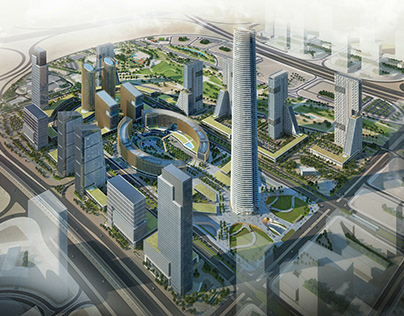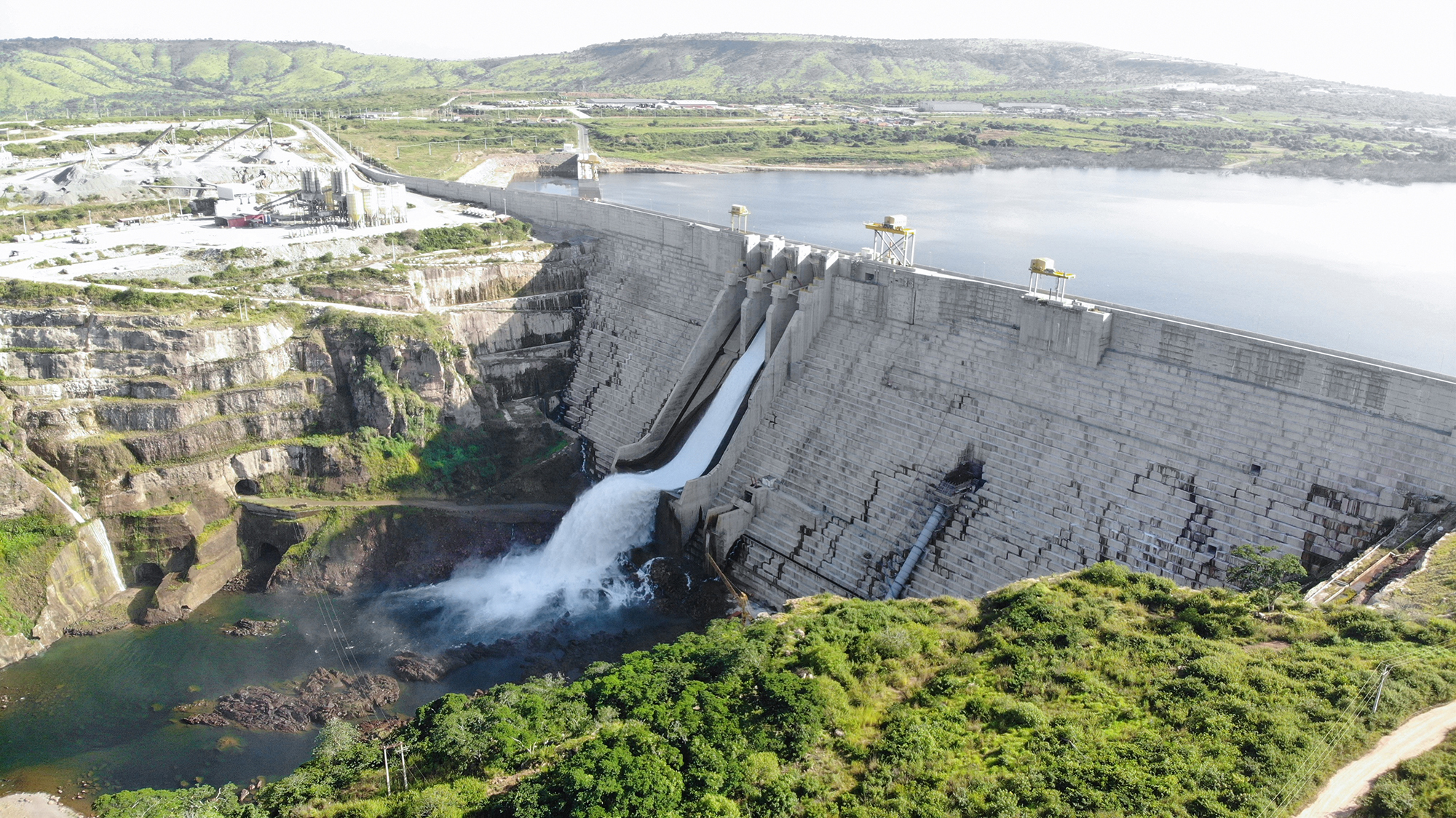
Perhaps more than any change currently underway in Africa, the continent’s ongoing massive investments in developing the infrastructure's economic enablers point to a highly prosperous and brighter future. The pace of progress is furious. In Tanzania alone, for example, the country is being transformed by investing in developing infrastructures such as the Standard Railway Gauge (SGR), the Julius Nyerere Hydropower Project, and the bus rapid transit (BRT) project under the Dar Rapid Transit Agency (DART) - the subject of the current Business Excellence profile.
The DART is a high-quality, high-capacity BRT system that is transforming the nature of public transport in Tanzania’s commercial capital city, Dar es Salaam, and by extension, the city’s seven million residents. Business Excellence recently met with the Chief Executive of the DART Agency, Dr. Edwin Mhede, a humble and results-oriented servant, who painted a clear picture of the difference that the new BRT system will make to the city (the economic hub of Tanzania), now estimated to be the fifth biggest city in Africa.
Origins and Overview
Dr. Mhede began by giving us a general overview of the Dar Rapid Transit (DART) Agency and the project: “DART Agency is a Government Agency established by the Government Notice No. 120 of 25th May 2017 made under the Executive Agency Act, No. 30 of 1997. The Agency works under the President’s Office Regional Administration and Local Government (PO-RALG) of the United Republic of Tanzania. The Agency was inaugurated by the Government on 16th June 2008 and it has the mandate to establish and operate BRT in Dar es Salaam. Also, to ensure smooth mobility on urban streets and roads and to ensure effective management of the DART Agency.
Dar es Salaam Bus Rapid Transit System branded as Dar Rapid Transit (DART) System, aims at providing high quality and most efficient public transport services hitherto featuring the modern high-capacity BRT buses operating in exclusive lanes in Dar es Salaam by incorporating best practice design and features and it is the first true BRT system in the Eastern, Southern, and Central African region. The first phase of the BRT road network, which started its operation on 16th May 2016, was jointly supported by the World Bank and the Government of Tanzania. It spans 20.9 km of trunk corridor and presently serves an average of 180,000 passengers per day using the current fleet of 210 buses employing over 1,000 permanent workers.
Dr. Mhede also projects that, under The Public-Private Partnership Act, Cap. 103, the procurement of a service provider by mid – 2022, who will bring in additional 95 Articulated buses before the end of 2022, will enable the BRT system to accommodate an estimated ridership of 400,000 passengers a day. As he points out, the impact of this in the short-term will be massive: “One of the outstanding successes of the BRT operation under the management of DART Agency is reduced commute times by more than two to three hours for residents, who previously faced upwards of four hours stuck in traffic every day and now they only spend an average of 30 to 40 minutes per trip.” In other terms, over 10% of the city’s working population added to a sustainable and efficient mode of transport.
A technology-enabled system
DART is not only the newest BRT system in Eastern, Southern, and Central Africa, it is also the most technologically advanced. Dr. Mhede says: “the Agency has invested (and continues to) in the development of ICT systems among them is the Government-owned Automated Fare Collection System (GoT-AFCS), Dar City Navigator, a Mobile Application (DarNavi)-available both in Android and iOS, and the DART Office Management Information System, known as DARTMISS. The Agency is also planning to acquired other systems such as Intelligent Transportation System (ITS) and Network Monitoring System (Nagios), as well as establishment of DART independent ICT infrastructure Network (DARTnet) and installation of CCTV Cameras for strengthening the delivery of services, safety and security of the system.”
In addition, he says, passengers will benefit from the technological innovations brought by the system: “An intelligent transportation system (ITS) will be used for fleet management, planning and scheduling of all our buses. The DART mobile application provides real-time information to commuters on bus arrivals and departures, nearest stations with distances and estimated time to reach, their locations, and real-time information on accidents and traffic flows. QR codes are also purchased through the app and validated by hand-held devices (HHDs). A range of other technological innovations brought by DART includes an office management information system, network, and services monitoring, and an ICT infrastructure that connects stations and stops along routes. The ITS will generate transit data that will be used for different purposes such as improving transport services, planning, research, making informed management and policy decisions, and enablers of smart city initiatives.
More than the sum of its parts
In line with most ambitious transport infrastructure projects, DART system is being delivered in several pre-planned construction phases. Dr. Mhede says: “Thus far, DART has planned 154.4 km of dedicated trunk lanes to be implemented in six (6) development phases. In terms of Phase 1, infrastructure development was completed and bus operations commenced in May 2016. On the other hand, the construction of BRT infrastructure for Phase 2 is in progress currently at 52% progress its planned completion is March 2023. The construction of BRT infrastructure in respect of Phase 3 has been in the pipeline for implementation as the procurement of contractor for construction works is at the final stages. On the other hand, the detailed engineering design for Phase 4 is in the final stage while the one for Phase 5 is completed. Finally, preparations for detailed engineering design for Phase 6 is ongoing.”
Phase 2, currently halfway to completion, is expected to be completed by March 2023, is even more ambitious. Dr. Mhede says: “It’s going to require a total of 755 buses to carry a forecasted daily ridership of around 650,000 passengers per day.” The numbers are staggering, and underline the overnight impact the project is going to have on Dar es Salaam.
Phases three to six will follow in short order and bring with them a combined 111 kilometers of dedicated truck lanes, over 100 new bus stations, a dozen bus terminals, and nearly 2,200 new buses in total. Together, these will form a new transport network linking previously isolated areas with Dar es Salaam’s Central Business District (CBD), yielding opportunities for hundreds of thousands of people that once were literally and metaphorically out of reach.
Socioeconomic Benefits
Providing opportunities for the less privileged in Dar es Salaam is just the beginning for DART; however, the new system dramatically enhances the quality of life for everybody by reducing travel time, thus having more time for productivity, contributing to less congestion along the corridor, providing taxpayers with an excellent return on investment, creating sustainable employment, and encouraging foreign direct investment (FDI) in the city and its environs. Furthermore, it has the potential to reduce accidents and illnesses related to air pollution, as well as give the city’s citizens a boost to their civic pride.
Partners
In terms of partners and suppliers, Dr. Mhede is keen to highlight three in particular that continue to help make DART System a resounding success. He says: “I have to mention PO-RALG for the policy guidance we enjoy from the same and the Ministry of Investment, Industry, and Trade (MIIT) for providing Kaizen training to our employees and our service providers for improvement of productivity and quality of our service. Also, a special mention goes to TANROADS for the construction and maintenance of our infrastructure, including trunk roads, bus stations, feeder stations, pedestrian bridges, and depots. TARURA has been responsible for the construction and maintenance of rural and urban roads for our feeder buses, and, LATRA, the Land Transport Regulatory Authority is our valued partner for regulating the BRT services and Tanzania Police Force for collaborating with the Agency to strengthen safety and security along with the DART system. We especially recognize and appreciate the World Bank, African Development Bank (AfBD), French Development Agency (Agence Française de Développement), and Japan International Cooperation Agency (JICA) for extending concessional support to BRT infrastructure development for BRT Phases 1, 3, and 4, BRT Phase 2, BRT Phase 5, and the grant to support Transit-Oriented Development (TOD) Project (under the technical cooperation framework), respectively.
Growth and Future Projections
With Dar es Salaam’s population set to reach 15-20 million in the next decade, DART system will play an increasingly central role in one of the Africa’s largest cities. Dr. Mhede says: “Our priority is to provide a sustainable urban mass transit system, leading to less pollution, safer public transport, fully integrated modes of transport, and above all, a much more liveable city.” The journey ahead will have challenges, of course, but the end result promises to be worth it, and all colleagues at DART and I myself are happily prepared to face and resolve the challenges as they emerge. The DART system will be a mode of transport fitting for t
DOWNLOAD
 DART-March-2022.pdf
DART-March-2022.pdf













